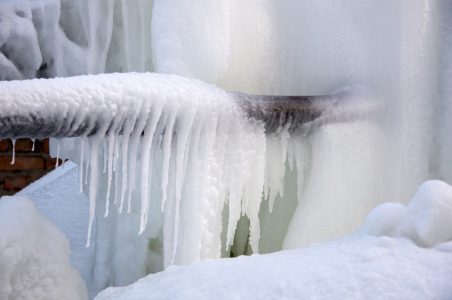What are your thoughts regarding Winter Plumbing Precautions: Preventing Frozen Pipes?

Cold weather can ruin your plumbing, specifically by freezing pipes. Here's just how to prevent it from happening and what to do if it does.
Intro
As temperature levels drop, the threat of icy pipelines boosts, possibly causing pricey repair services and water damage. Understanding how to avoid icy pipelines is critical for property owners in cool environments.
Understanding Frozen Pipelines
What triggers pipelines to freeze?
Pipelines freeze when exposed to temperatures listed below 32 ° F (0 ° C) for expanded periods. As water inside the pipelines ices up, it expands, putting pressure on the pipe walls and possibly creating them to rupture.
Threats and problems
Frozen pipelines can result in supply of water interruptions, property damage, and costly repair services. Burst pipelines can flood homes and trigger substantial architectural damage.
Indicators of Frozen Pipeline
Determining icy pipes early can stop them from rupturing.
Exactly how to identify icy pipes
Try to find decreased water flow from faucets, uncommon odors or noises from pipes, and visible frost on subjected pipelines.
Prevention Tips
Shielding susceptible pipelines
Wrap pipelines in insulation sleeves or use heat tape to shield them from freezing temperature levels. Focus on pipelines in unheated or external areas of the home.
Home heating strategies
Maintain indoor spaces effectively heated, especially areas with pipes. Open closet doors to permit warm air to flow around pipelines under sinks.
Securing Outside Pipes
Garden hose pipes and outside faucets
Detach and drain yard pipes before winter. Set up frost-proof spigots or cover outside faucets with insulated caps.
What to Do If Your Pipes Freeze
Immediate activities to take
If you believe icy pipes, keep faucets open to eliminate stress as the ice thaws. Utilize a hairdryer or towels soaked in hot water to thaw pipes gradually.
Long-Term Solutions
Architectural changes
Consider rerouting pipelines away from outside walls or unheated areas. Include additional insulation to attic rooms, cellars, and crawl spaces.
Upgrading insulation
Buy high-grade insulation for pipes, attics, and wall surfaces. Correct insulation aids maintain constant temperatures and lowers the risk of icy pipes.
Conclusion
Preventing frozen pipes calls for aggressive procedures and quick reactions. By recognizing the causes, signs, and safety nets, house owners can protect their plumbing during winter.
6 Proven Ways to Prevent Frozen Pipes and Protect Your Home
Disconnect and Drain Garden Hoses
Before winter arrives, start by disconnecting your garden hoses and draining any remaining water. Close the shut-off valves that supply outdoor hose bibs and leave the outdoor faucet open to allow any residual water to drain. For extra protection, consider using faucet covers throughout the colder months. It’s also important to drain water from any sprinkler supply lines following the manufacturer’s directions.
Insulate Exposed Pipes
Insulating your pipes is an effective way to prevent freezing. Pipe insulation is readily available at home improvement stores and is relatively inexpensive. Pay close attention to pipes in unheated areas such as the attic, basement, crawl spaces, or garage. Apply foam insulation generously to create a buffer against the cold. You can also wrap your pipes in heat tape or thermostat-controlled heat cables for added warmth.
Seal Air Leaks
Inspect your home for any cracks or openings that could let in cold air. Seal any holes around the piping in interior or exterior walls, as well as the sill plates where your home rests on its foundation. Additionally, make sure to keep your garage door closed unless you’re entering or exiting. Leaving it open creates a significant air leak that can lead to frozen pipes.
Allow Warm Air Circulation
During cold snaps, it’s essential to allow warm air to circulate evenly throughout your home. Leave interior doors ajar to promote better airflow. Open kitchen and bathroom cabinets to help distribute heat consistently around the rooms. If you have small children or pets, be sure to remove any household chemicals or potentially harmful cleaners from open cabinets for safety.
Let Faucets Drip
A small trickle of water can make a big difference in preventing ice formation inside your pipes. When temperatures drop significantly, start a drip of water from all faucets served by exposed pipes. This continuous flow helps prevent the water from freezing. Additionally, running a few faucets slightly can relieve pressure inside the pipes, reducing the chances of a rupture if the water inside does freeze.
https://choateshvac.com/6-proven-ways-to-prevent-frozen-pipes-and-protect-your-home/

I was introduced to that editorial about 6 Ways to Prevent Frozen Pipes through a good friend on a different web address. Those who liked our post please consider to pass it around. I enjoy your readership.
Request A Quote